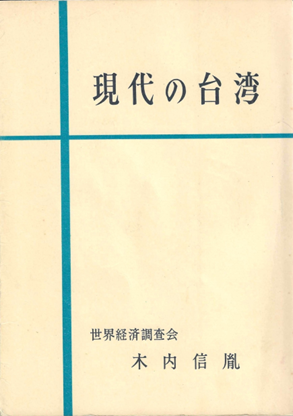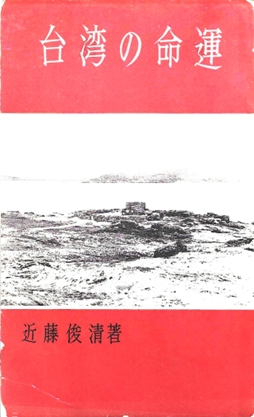Writings on Taiwan Published in Japan in 1960’s
Tomita Akira

My specialty is Taiwanese history. My research was mainly on Taiwan during the Japanese colonial period in the past, but I have also been studying Taiwan-Japan relations after World War II and during the Cold War in recent years.
Several excellent overviews of the political and economic relations between Taiwan and Japan during the period have already been published (e.g. Kawashima Shin et al, History of Taiwan-Japan Relations 1945-2020 (Enlarged edition)). My current interest is in books published in Japan in the early 1960s that discussed Taiwanese society in general. In the early 1960s, less than 20 years after the end of Japanese rule in Taiwan, there were formal diplomatic relations between Japan and the Republic of China, with Taipei as its temporary capital, and people and goods were frequently moved between them. The authors of the books, however, unanimously said that Taiwan was not well known in Japan and that accurate information on Taiwan had not been conveyed to the public in Japan. One book published in 1965, for example, stated, “There was very little literature on Taiwan after the war. Only four or five books were published. Moreover, there are almost no empirical studies.” [Southeast Asia Research Association, The Face of Taiwan]
In an era of restrictions on academic research and reporting, the motives for publication and the content of the writings varied. A critic who visited Taiwan at the invitation of Chiang Kai-shek’s government gave high praise to the land reforms and industrial policies, and while recognizing the conflict between ‘Mainlanders’ and ‘Native Taiwanese’ (the so-called ‘Provincial problem’), he expressed optimism that the conflict would soon be resolved (Kiuchi Nobutane, Contemporary Taiwan). On the other hand, a journalist who once worked as a Taipei correspondent of the Japanese newspaper severely criticized the policies of the Chiang Kai-shek regime and also detailed the seriousness of the Provincial problem (Kondo Toshikiyo, Taiwan’s Fate). Although few in number, these books are thought to have reached a general readership. If so, what impact did they have on the formation of Japanese society’s view of Taiwan at the time?
I read these books in my class with the master’s students. None of them had majored in history or literature as undergraduates, so the discussions were not necessarily highly specialized, but each student actively expressed his or her own opinions and exchanged views with other students. Slightly older students shared their own experiences of Taiwanese society and what happened between Taiwan and Japan that the younger students may not know about.
There is a memorable passage under the joint names of the authors at the beginning of the above-mentioned The Face of Taiwan (These students, from the human geography course at the University of Tokyo, participated in the fieldwork in Taiwan. There are some who went on to pursue academic careers or worked for a trading company or the central government after their graduation). “Why Taiwan had become so distant to Japanese society” is an important question that is also relevant to the debate today. The passage is like the following;
Seventeen or eighteen years have already passed since the end of the war. How has Taiwan changed since then?
We, who only know the horror of the war in our young minds and learnt about the Japanese rule of Taiwan only as a historical event in the margins of our textbooks, have wondered the question. However, nothing has ever satisfactorily answered even this simple question ……
(Sep. 2023)


(L)Kiuchi Nobutane, Contemporary Taiwan, Sekai Keizai Chosakai, 1961. (R)Kondo Toshikiyo, Taiwan’s Fate, Misuzu Shobo, 1961.









